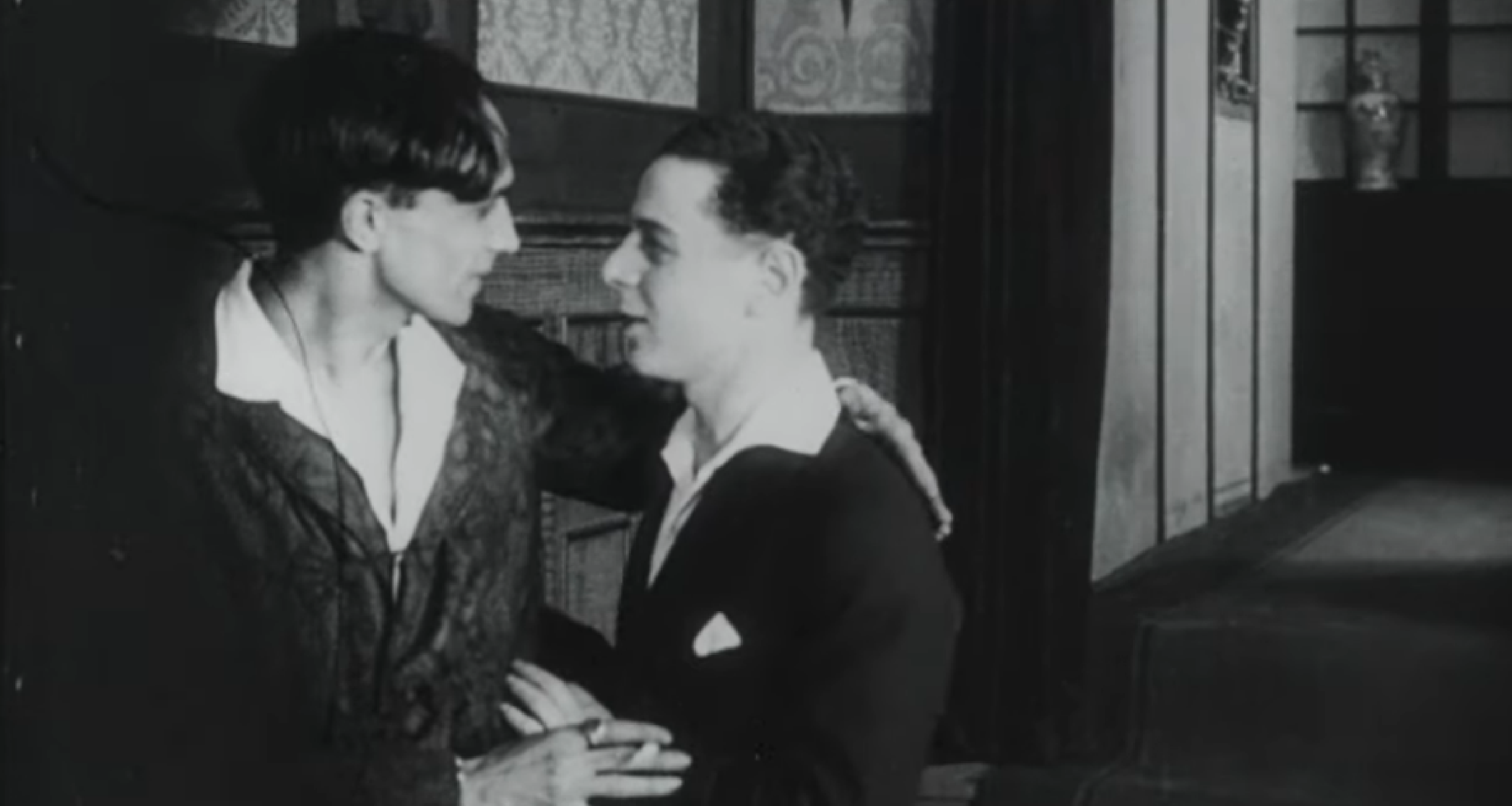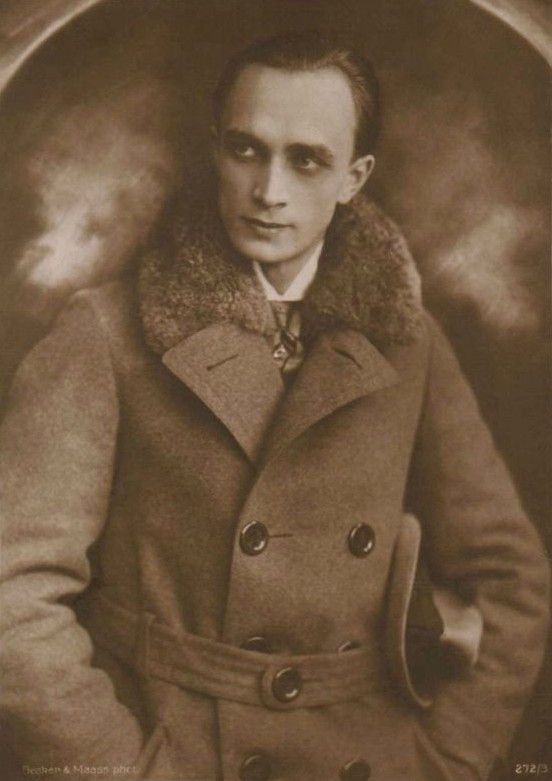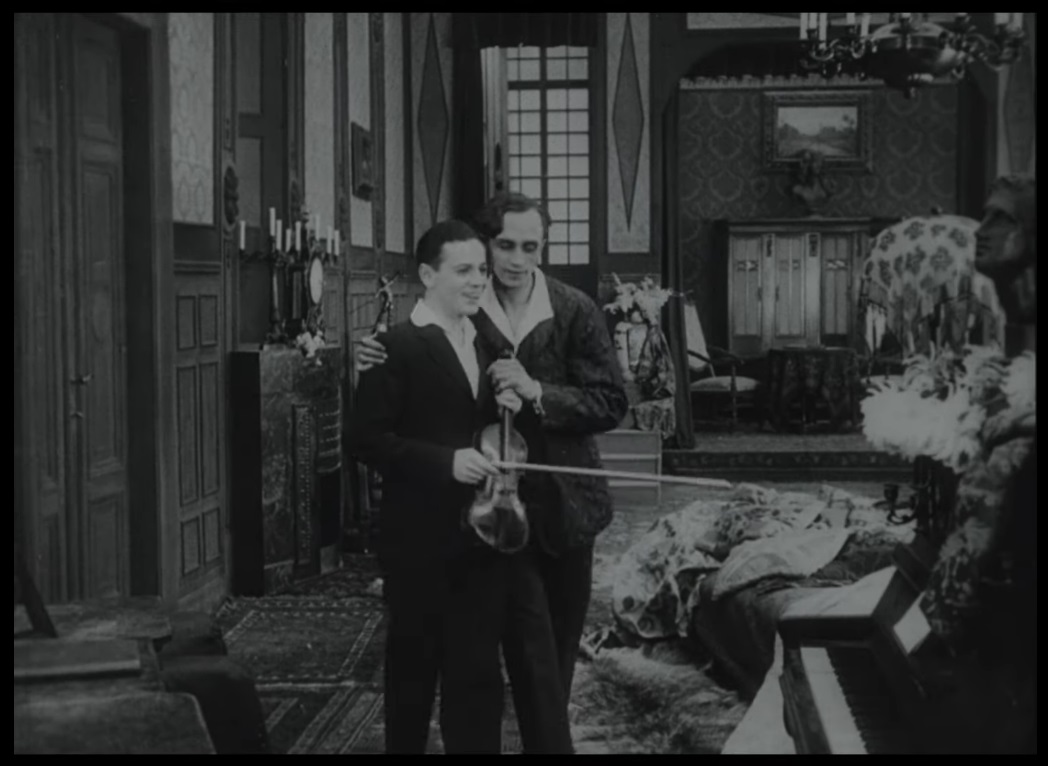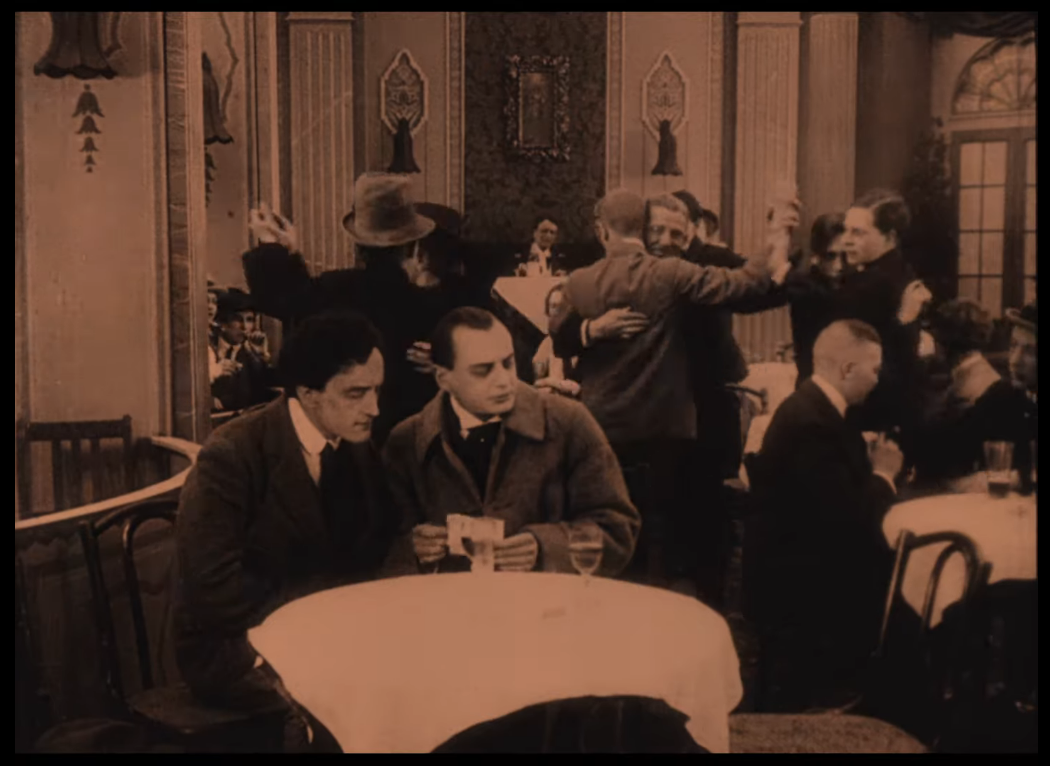The ‘world’s first pro-gay film’ that was almost erased from history
1919's Different From the Others starring Conrad Veidt was decades ahead of its time - but was almost lost completely due to government censorship and Nazi destruction.
By Will Stroude

Words: Hugh Kaye; Image: YouTube/UCLAFilmTVArchive
“I was willing to shoot Captain Renault and I’m willing to shoot you…” Humphrey Bogart’s words in the final minutes of possibly the greatest movie ever made, Casablanca.
The 1942 film has everything: wartime drama, a doomed romance, wonderful music and a phrase that spawned another movie – The Usual Suspects – more than 50 years later.
It also had a classic bad guy – one without any redeeming features, a diehard Nazi. Bogart and Ingrid Bergman may have been the names that drew in cinema audiences but both were reportedly paid less than Conrad Veidt, who played the man in the way of Bogie’s bullet: Major Heinrich Strasser.
And it’s Veidt whose life and career is far more interesting – especially for one particular film made years earlier.

Conrad Veidt (1893-1943) appeared in more than 100 feature films, including 1942’s Casablanca (Image: Wiki Commons)
When you think of the first movie to show gay men in a positive light, your mind might turn to something made in the Noughties or possibly the 1990s. You’d be wrong. Very wrong.
The German silent film Anders als die Andern (English: Different from the Others) was made in 1919. Veidt – widely reported to have been bisexual – plays Paul Korner, a gay violinist who falls in love with his student and protégé, Kurt.
It’s believed to be the first gay rights movie, certainly the first to have an explicitly gay character and for that character to be seen in a sympathetic light (even if his story doesn’t end well).
The opening moments see Korner reading a newspaper, dwelling on the obituaries and the seemingly unexplained deaths of a number of men. But he knows that all the men took their own lives and behind the tragedies is Germany’s anti-gay law known as Paragraph 175, which remained in force from 1871 until 1994, with some 140,000 men being convicted.
The law stated: “an unnatural sex act committed between persons of the male sex, or by humans with animals, is punishable by imprisonment; the loss of civil rights might also be imposed.”
The film goes on to mention famous gay men throughout the ages, including Da Vinci and Tchaikovsky.
As the relationship between the two men develops, they are spotted holding hands by a blackmailer who proceeds to make their lives hell.
Korner first meets the blackmailer at a costume party and there are scenes in a drag club which are regarded as the first film footage of gay men dancing together. Modern-day audiences might see similarities with the gay scene today – albeit the film’s were underground. In 1923, the playwright Anita Loos said of the period: “Any Berlin lady of the night turn out to be a man… the prettiest girl on the street was Conrad Veidt.”

A surviving still from 1919’s Different From the Others (Image: YouTube/UCLAFilmTVArchive)
The situation takes its toll on Kurt and he runs away. Paul is left broken-hearted and, while looking at a photo of his lover, starts to remember his past.
We see him at school where he is caught kissing another boy and he is expelled. His memories move on to university where he finds it more and more difficult to hide his sexuality.
He tries hypnotherapy to “cure himself” before his worried parents take him to a doctor. The medic is played by Magnus Hirschfeld, who co-wrote the script and was known as the Einstein of Sex. He was also a vocal campaigner for gay rights.
In a scene that sums up the film’s attitude to gay men, the doctor says, through words on the screen, known as intertitles: “Homosexuality is neither a vice nor crime, indeed not even an illness… your son suffers not from his condition but rather from the false judgment of it.
“This is the legal and social condemnation of his feelings, along with widespread misconceptions about their expression. The persecution of homosexuals belongs in the same sad chapter of human history in which persecution of heretics and witches is inscribed. [The laws] are a violation of the fundamental rights of the individual.”
Earlier, he tells Korner: “Love for one’s own sex can be just as pure and noble as that for the opposite sex.”
However, Korner is eventually charged with a crime and although a clearly sympathetic judge gives him the minimum sentence possible – a week in jail – the musician’s life is ruined. He is disowned by his family and loses his job. In desperation, he finally takes his own life.
It’s Kurt who finds the body and he also tries to kill himself but again Hirschfeld’s character steps in, saying, in the film’s final lines: “You have to keep living. Live to change the prejudices by which this man has been made one of countless victims.
“You must restore the honour of this man and bring justice to him, and to all those who came before him – and all those to come after him. Justice through knowledge.”
The reaction to the film’s release, in May 1919, was – at the outset – remarkably good and it ran in cinemas for about a year, with praise for its “good taste”.

Different From the Others includes some of the earlier film footage of men dancing together (Image: YouTube/UCLAFilmTVArchive)
But then conservative religious groups began to protest, initiating a public debate on censorship. At that time, Germany was a republic and its constitution ensured freedom of speech and expression. However, as Robert Beachy points out in his book, Gay Berlin: Birthplace of a Modern Identity, in response to Different, special exemptions were made for cinema – allowing films said to be “obscene” or “dangerous to young people, to be censored.
The trope that youngsters could be turned gay was aired again and again.
There were reports of riots and vandalism at cinemas which showed the film, the filmmakers and Veidt received death threats and right-wing groups are said to have released gas and rabid rats into the aisles of cinemas that dared screen it. Later, the star was to get hate mail from one Adolf Hitler.
Just one year after its release, public screenings were banned and only doctors and lawyers could watch it and then only for educational purposes.
In 1927, Hirschfeld, along with director Richard Oswald, released a “watered down” version of the film, removing the scene were Paul and Kurt walk down a street hand-in-hand. But the authorities remained steadfast in their ban.
And when Hitler came to power in 1933 all copies of Different were seemingly destroyed when a rabid mob attacked Hirschfeld’s Institute of Sexology. As silentfilm.org reports, the film was branded “a fest for degenerates which could ruin German youth” while Hirschfeld was described as an “apostle of sodomy”.
And that might have been that… but years after the end of the Second World War, one surviving print of the film surfaced in the Soviet Union in the 1970s. It turned out that back in 1927 Hirschfeld had rearranged some of the scenes and inserted them into another feature called Gesetze der Liebe (Laws of Love).
The film now only lasts about 50 minutes (the original ran for 90), with not only whole scenes missing but whole characters and parts of the plot gone too. Nonetheless, in 2015, UCLA Film and Television Archive bought a high-definition print of the footage from the Russian Film Archive.
The director of the US archive, Jan-Christopher Horak, said: “The view of the film is at least 50 years ahead of its time. It takes the view that homosexuality isn’t a sickness or a pathology, it’s just another expression of human sexuality.
“It’s the kind of enlightened theory that you wouldn’t see in this country until the Seventies or Eighties.”
He added: “To use the term ‘restore’ would be wrong. There’s not enough footage for a real restoration. You’re not seeing the original because we don’t know what the original looks like.

Different From the Others depicts gay men being blackmailed because of their sexuality amid the shadow of Germany’s Paragraph 175 anti-gay law (YouTube/UCLAFilmTVArchive)
“But what we have put together allows people to experience the remarkable culture that existed in Berlin. As far as I know, this is the earliest document we have of gays and lesbians being represented on-screen.”
And looking back at the film’s history, in 2013, The New York Times noted: “Some critics and audiences took to the film, others found it indecent, unwatchable. There were catcalls at some screenings… it wasn’t just that the two romantic leads were men, the film also had the audacity to claim homophobia – not homosexuality – was a scourge of society.”
An expert on homosexuals in films, and an LGBT+ activist, Vito Russo, said of the film: “This fragment survives as an accident of history,” before adding that what is known of the rest of the film comes from publicity stills that survived and from his own conversations with the writer Christopher Isherwood.
The film was screened as part of Outfest in 2012 and at the 66th Berlin Film Festival in early 2016. A few months later it aired at NewFest, New York’s LGBT film festival. If you’re lucky, you might even be able to track down a DVD version. You can certainly see clips on YouTube.
Different’s Berlin-born star, Conrad Veidt, wasn’t finished either. In 1928, he starred in The Man Who Laughed, with his character now accepted as the inspiration for Batman’s foe The Joker. He also crops up in Christopher Isherwood’s writings.
He became a loud voice in opposition to the Nazis. Having married and divorced twice, he wedded Ilona Prager, a Jewish woman, then fled Germany never to return. On his race identity card before leaving he wrote “Jew”, even though he was not.
In 1933, having refused to make propaganda films for Josef Goebbels, “Connie” was briefly detained by the Gestapo and tortured but they agreed to hand him over to the British and he lived in the UK and became a British citizen before moving to America.

Conrad Veidt in 1943’s Above Suspicion, which was the released after his death that year (Image: Wiki Commons)
He went on to make more than 100 films, including, in 1940, The Thief of Bagdad, and again his mannerisms and performance proved an inspiration for a future film villain, this time Jafar in Disney’s 1992 animated version of Aladdin.
He helped others escape the clutches of the Nazis and took in children during the blitz.
One fan, writing on pharaonicwolf.tumblr.com says of him: “He was made of actual sex on and off the screen. He could be feminine without being effeminate, seductive and possessing and powerful without being gruff or macho, incredibly catlike and soft without being weak. When he smoked, it looked like he was giving oral sex to a woman and a man at the same time.”
Referring to Connie’s time in Weimar Germany, the fan adds: “Most of the time, his friends would describe him as a ladies’ man during the day, and going after the men after he’d had a few drinks in the evening.”
Ironically though, he is best remembered for his role as a Nazi in Casablanca. And despite his body of work before that, Connie would be happy. He played Nazis to show what sort of people they were – often giving his fee away to those in need.
He was to die of a heart attack less than a year after the Oscar-winning film’s release. He was only 50 years old.
But we should also remember him in Different from the Others. A film with a defiant plea for tolerance and startling opposition to anti-gay laws – long before the United Nations’ declaration on human rights, long before any civil rights or equality legislation. Long before Philadelphia, Call Me By Your Name, Brokeback Mountain, or Love, Simon…
Watch some surviving footage from Different From the Others below:
